Exploring Popular Diets: Health Benefits and Drawbacks of Dietary Lifestyles
ОТКАЗ ОТ ОТГОВОРНОСТ:Този блог няма за цел да поставя диагнози...
- В тази статия:
- Vegan Diet: Benefits and Challenges
- Vegetarian Diet: Flexibility with Plant-Based Nutrition
- Paleo Diet: A High-Protein Approach to Eating
- Gluten-Free Diet: A Solution for Gluten Sensitivity
- Raw Food Diet: Pros and Cons
- Conclusion

Today a wide range of dietary lifestyles is practiced, each offering unique approaches to health and nutrition. With so many popular diets and healthy eating trends, it can be challenging to understand the differences. In this article, we’ll explore some of the most talked-about dietary lifestyles, highlighting their potential benefits and drawbacks to help you decide which one might be right for you.
Vegan Diet: Benefits and Challenges
One of the most enduring healthy eating trends, the vegan diet, eliminates all animal products, including meat, dairy, eggs, and even honey. Many people choose veganism for ethical reasons, environmental concerns, or health benefits.
Health Benefits
- Heart Health: A vegan diet is often lower in saturated fats and cholesterol, which can reduce the risk of heart disease and hypertension.
- Lower Cancer Risk: Research suggests that vegans may have a reduced risk of certain cancers, possibly due to the high intake of fruits, vegetables, and fiber.
- Environmental Sustainability: Veganism is one of the dietary lifestyles associated with a lower environmental impact, as it reduces reliance on animal agriculture.
Drawbacks
- Nutritional Gaps: Without proper planning, it’s easy to miss out on essential nutrients like vitamin B12, iron, and omega-3 fatty acids. Vegans often need supplements or fortified foods to fill these gaps.
- Social and Practical Limitations: Eating out or attending social events can be tricky, as many dishes may contain hidden animal products or cross-contamination with non-vegan foods.
Vegetarian Diet: Flexibility with Plant-Based Nutrition
The vegetarian diet is one of the more flexible dietary lifestyles, allowing dairy and eggs but avoiding meat and fish. Vegetarians enjoy a wide variety of plant-based foods while still including animal by-products, making it easier to maintain than stricter diets like veganism.
Health Benefits
- Balanced Nutrition: A well-planned vegetarian diet is rich in fiber, vitamins, and minerals, while dairy and eggs provide additional sources of protein and calcium.
- Weight Control: Many studies link vegetarianism to lower body mass indexes (BMIs) and healthier weight management compared to omnivorous diets.
- Lower Risk of Chronic Diseases: Like other healthy eating trends that emphasize whole foods, vegetarianism may reduce the risk of heart disease, diabetes, and certain cancers.
Drawbacks
- Potential Nutrient Shortfalls: While more flexible than veganism, vegetarians should still be mindful of their intake of iron, zinc, omega-3 fatty acids, and vitamin B12.
- Processed Foods: Many pre-packaged vegetarian foods, such as meat substitutes, can be highly processed and contain high levels of sodium, sugar, or unhealthy fats.
Paleo Diet: A High-Protein Approach to Eating
The Paleo diet has become one of the most widely known popular diets, often referred to as the “caveman diet.” It emphasizes eating foods presumed to be available during the Paleolithic era, such as lean meats, fish, fruits, vegetables, nuts, and seeds, while avoiding processed foods, grains, legumes, and dairy.
Health Benefits
- Reduced Inflammation: The Paleo diet’s focus on whole, unprocessed foods may help reduce inflammation and lower the risk of chronic diseases.
- Stable Blood Sugar: By eliminating refined sugars and processed carbs, the Paleo diet can help maintain steady blood sugar levels, reducing the likelihood of type 2 diabetes.
- Protein-Rich Diet: Paleo eaters consume plenty of protein, which supports muscle growth, metabolism, and overall physical health.
Drawbacks
- Restrictive Nature: Excluding entire food groups like grains, dairy, and legumes can make the Paleo diet challenging to sustain in the long term.
- Nutritional Imbalances: The absence of dairy and grains could lead to a lack of calcium, fiber, and certain vitamins, making supplementation or careful food planning necessary.
- Cost: Purchasing organic produce and grass-fed meats, which are often recommended in this diet, can make it more expensive than other dietary approaches.
Gluten-Free Diet: A Solution for Gluten Sensitivity
The gluten-free diet is essential for individuals with celiac disease or gluten sensitivity. Gluten is a protein found in wheat, barley, rye, and some oats, and it can trigger digestive issues or autoimmune responses in susceptible individuals. This healthy eating trend has also been embraced by others who believe it can improve digestion and energy levels.
Health Benefits
- Improved Digestive Health: For those with gluten intolerance, removing gluten from the diet can alleviate symptoms such as bloating, gas, and digestive discomfort.
- Increased Energy: Many people report feeling more energetic and less fatigued after eliminating gluten from their diet.
- Lower Inflammation: Cutting gluten may help reduce inflammation in people with gluten sensitivity, potentially lowering the risk of certain chronic conditions.
Drawbacks
- Over-Reliance on Processed Foods: Many gluten-free packaged products are heavily processed and can be low in fiber, vitamins, and minerals, which could offset the potential health benefits of the diet.
- Nutrient Deficiencies: A lack of whole grains could lead to insufficient intake of important nutrients like fiber, iron, and B vitamins, requiring careful meal planning.
- Social Limitations: Navigating meals outside the home can be tricky since many restaurant foods and pre-packaged snacks contain gluten.
Raw Food Diet: Pros and Cons
The raw food diet is a popular diet that revolves around eating uncooked and unprocessed foods, mainly fruits, vegetables, nuts, seeds, and sprouted grains. The idea is that raw foods retain their natural enzymes and nutrients, which are often lost during cooking.
Health Benefits
- Nutrient Density: Raw foods are packed with vitamins, minerals, and antioxidants, which can boost immunity and support overall well-being.
- Anti-Inflammatory: The absence of processed foods may reduce inflammation, potentially lowering the risk of chronic conditions like heart disease and diabetes.
- Weight Management: This dietary lifestyle is naturally low in calories and high in fiber, which may promote weight loss and better digestion.
Drawbacks
- Nutrient Deficiencies: Without cooked foods, some essential nutrients like protein, calcium, and iron may be harder to absorb. Additionally, certain beneficial compounds in foods like tomatoes are more bioavailable when cooked.
- Digestive Strain: The high fiber content may lead to bloating or discomfort for some people.
- Limited Flexibility: Adhering strictly to raw foods can be time-consuming, especially when preparing complex meals or sprouting grains and seeds.
Conclusion
With so many dietary lifestyles and popular diets to choose from, it's important to consider both the health benefits and potential drawbacks of each. Whether you’re exploring raw food, veganism, vegetarianism, paleo, or gluten-free eating, understanding how these healthy eating trends align with your lifestyle and nutritional needs is key. Always consult with a healthcare provider or nutritionist to ensure you’re making informed decisions that support your long-term health goals.
References:
- Sidhu SRK, Kok CW, Kunasegaran T, Ramadas A. Effect of plant-based diets on gut microbiota: A systematic review of interventional studies. Nutrients. 2023;15(6):1510. doi:10.3390/nu15061510.
- von Schacky C, Oelrich B, Mozaffarian D, et al. Cardiovascular health and plant-based diets: A focus on raw and vegan lifestyles. Eur Heart J. 2022;43(5):150-162. doi:10.1093/eurheartj/ehac015.
- Whitham M, Turner JE, Mathers JC. Benefits of vegetarian and vegan diets on metabolic health. Nutrients. 2021;13(7):2145. doi:10.3390/nu13072145.
- Jönsson T, Granfeldt Y, Ahrén B, Branell UC, Pålsson G, Hansson A. Beneficial effects of a Paleolithic diet on cardiovascular risk factors in type 2 diabetes: A randomized cross-over pilot study. Front Nutr. 2020;7:28. doi:10.3389/fnut.2020.00028.
- Caio G, Volta U, Tovoli F, et al. Effectiveness of gluten-free diet in treating gluten sensitivity: A systematic review. Nutrients. 2020;12(4):1284. doi:10.3390/nu12041284.








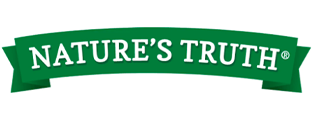




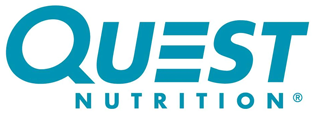



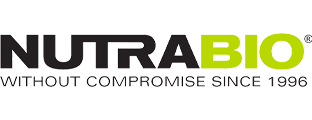








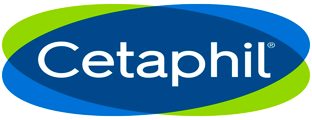







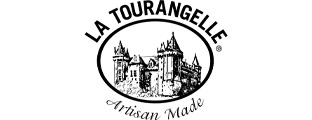




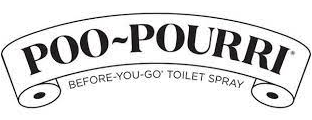


























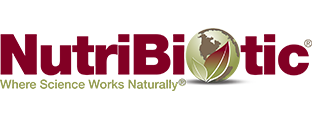


 От Майкъл Мъри, лекар натуропат
От Майкъл Мъри, лекар натуропат 